ISA PROJECT
The history of India begins with evidence of human activity of Homo sapiens, as long as 75,000 years ago, or with earlier hominids including Homo erectus from about 500,000 years ago. TheIndus Valley Civilisation, which spread and flourished in the northwestern part of the Indian subcontinent from c. 3300 to 1300 BCE in present-day Pakistan and northwest India, was the first major civilisation in South Asia. A sophisticated and technologically advanced urban culture developed in the Mature Harappan period, from 2600 to 1900 BCE.
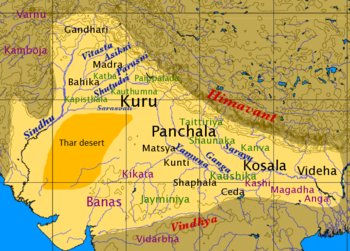
The Vedic period is characterised by Indo-Aryan culture associated with the texts of Vedas, sacred to Hindus, which were orally composed in Vedic Sanskrit. The Vedas are some of the oldest extant texts in India and next to some writings in Egypt and Mesopotamia are the oldest in the world. The Vedic period lasted from about 1500 to 500 BCE, laying the foundations of Hinduism and other cultural aspects of early Indian society.Historians have analysed the Vedas to posit a Vedic culture in thePunjab region and the upper Gangetic Plain.Vedic people believed in the transmigration of the soul, and the peepultree and cow were sanctified by the time of the Atharva Veda.In addition to the Vedas, the principal texts of Hinduism, the core themes of the Sanskrit epics Ramayana and Mahabharata are said to have their ultimate origins during this period.
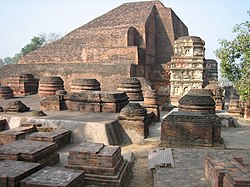
Nalanda University
The history of India begins with evidence of human activity of Homo sapiens, as long as 75,000 years ago, or with earlier hominids including Homo erectus from about 500,000 years ago. TheIndus Valley Civilisation, which spread and flourished in the northwestern part of the Indian subcontinent from c. 3300 to 1300 BCE in present-day Pakistan and northwest India, was the first major civilisation in South Asia. A sophisticated and technologically advanced urban culture developed in the Mature Harappan period, from 2600 to 1900 BCE.
Vedic period (1500–500 BCE)

The Vedic period is characterised by Indo-Aryan culture associated with the texts of Vedas, sacred to Hindus, which were orally composed in Vedic Sanskrit. The Vedas are some of the oldest extant texts in India and next to some writings in Egypt and Mesopotamia are the oldest in the world. The Vedic period lasted from about 1500 to 500 BCE, laying the foundations of Hinduism and other cultural aspects of early Indian society.Historians have analysed the Vedas to posit a Vedic culture in thePunjab region and the upper Gangetic Plain.Vedic people believed in the transmigration of the soul, and the peepultree and cow were sanctified by the time of the Atharva Veda.In addition to the Vedas, the principal texts of Hinduism, the core themes of the Sanskrit epics Ramayana and Mahabharata are said to have their ultimate origins during this period.
Formative period (800-200 BCE)
During the time between 800 and 200 BCE the Shramana-movement developed, from which originated Jainism and Buddhism. In the same period the first Upanishds were written.
Mahajanapadas (600-300 BCE)
In the later Vedic Age, a number of small kingdoms or city states had covered the subcontinent, many mentioned in Vedic, early Buddhist and Jaina literature as far back as 1000 BCE. By 500 BCE, sixteen monarchies and "republics" known as the Mahajanapadas—Kashi,Kosala, Anga, Magadha, Vajji (or Vriji), Malla, Chedi, Vatsa (or Vamsa), Kuru, Panchala, Matsya (or Machcha), Shurasena, Assaka,Avanti, Gandhara,and Kamboja—stretched across the Indo-Gangetic Plain from modern-day Afghanistan to Bengal and Maharastra.
Upanishads and Shramana movements
The 9th and 8th centuries BCE witnessed the composition of the earliest Upanishads.
Increasing urbanisation of India in 7th and 6th centuries BCE led to the rise of new ascetic or shramana movements which challenged the orthodoxy of rituals. Mahavira (c. 549–477 BCE), proponent of Jainism, and Buddha (c. 563-483), founder of Buddhism were the most prominent icons of this movement.

Nalanda University
Maurya Empire (322–185 BCE)
The Maurya Empire (322–185 BCE), ruled by the Mauryan dynasty, was a geographically extensive and powerful political and military empire in ancient India. The empire was established by Chandragupta Maurya in Magadha what is now Bihar. The empire flourished under the reign of Ashoka the Great.
Ashokan Pillar at Vaishali
Gupta rule - Golden Age
The Classical Age refers to the period when much of the Indian subcontinent was reunited under the Gupta Empire (c. 320–550 CE).This period has been called the Golden Age of India and was marked by extensive achievements in science, technology, engineering,art, dialectic, literature, logic, mathematics, astronomy, religion, and philosophy that crystallized the elements of what is generally known as Hindu culture.The decimal numeral system, including the concept of zero, was invented in India during this period.The peace and prosperity created under leadership of Guptas enabled the pursuit of scientific and artistic endeavors in India.
Indus Valley Civilization
The Indus Valley Civilization (IVC) was a Bronze Age civilization (3300–1300 BCE; mature period 2600–1900 BCE) in the northwestern region of the Indian subcontinent,consisting mainly of what is now Pakistan, and parts of India, Afghanistan and Iran.Flourishing around theIndus River basin, the civilization extended east into the Ghaggar-Hakra River valley and the upper reaches of Ganges-Yamuna Doab;it extended west to the Makran coast ofBalochistan, north to northeastern Afghanistan and south to Daimabad in Maharashtra. The civilization was spread over some 1,260,000 km², making it the largest known ancient civilization.
The Indus Valley Civilization is also known as the Harappan Civilization.
Seal impression showing a typical inscription of five characters
Chronology
The mature phase of the Harappan civilization lasted from c. 2600 to 1900 BCE.
| Early Food Producing Era | ||
|---|---|---|
| Regionalisation Era 5500-2600 | ||
| 3300–2600 | Early Harappan | |
| 2600–1900 | Mature Harappan (Indus Valley Civilization) | Integration Era |
| 1900–1300 | Late Harappan (Cemetery H); Ochre Coloured Pottery | Localisation Era |
Early Harappan
The Early Harappan Ravi Phase, named after the nearby Ravi River, lasted from circa 3300 BCE until 2800 BCE.Trade networks linked this culture with related regional cultures and distant sources of raw materials, including lapis lazuli and other materials for bead-making. Villagers had, by this time, domesticated numerous crops, including peas, sesame seeds, dates, andcotton, as well as animals, including the water buffalo. Early Harappan communities turned to large urban centres by 2600 BCE, from where the mature Harappan phase started.
Mature Harappan
By 2600 BCE, the Early Harappan communities had been turned into large urban centres. Such urban centres include Harappa,Ganeriwala, Mohenjo-Daro.
Cities
A sophisticated and technologically advanced urban culture is evident in the Indus Valley Civilization making them the first urban centres in the region. The quality of municipal town planning suggests the knowledge of urban planning and efficient municipal governments which placed a high priority on hygiene, or, alternatively, accessibility to the means of religious ritual.
The ancient Indus systems of sewerage and drainage that were developed and used in cities throughout the Indus region were far more advanced than any found in contemporary urban sites in the Middle East and even more efficient than those in many areas of Pakistan and India today. The advanced architecture of the Harappans is shown by their impressive dockyards, granaries, warehouses, brick platforms, and protective walls. The massive walls of Indus cities most likely protected the Harappans from floods and may have dissuaded military conflicts.[citation needed]
The purpose of the citadel remains debated. In sharp contrast to this civilization's contemporaries, Mesopotamia and Ancient Egypt, no large monumental structures were built. There is no conclusive evidence of palaces or temples—or of kings, armies, or priests. Some structures are thought to have been granaries. Found at one city is an enormous well-built bath (the "Great Bath"), which may have been a public bath. Although the citadels were walled, it is far from clear that these structures were defensive. They may have been built to divert flood waters.
Technology
The people of the Indus Civilization achieved great accuracy in measuring length, mass, and time. They were among the first to develop a system of uniform weights and measures.
These chert weights were in a ratio of 5:2:1 with weights of 0.05, 0.1, 0.2, 0.5, 1, 2, 5, 10, 20, 50, 100, 200, and 500 units, with each unit weighing approximately 28 grams, similar to the English Imperial ounce or Greek uncia, and smaller objects were weighed in similar ratios with the units of 0.871. However, as in other cultures, actual weights were not uniform throughout the area. The weights and measures later used in Kautilya's Arthashastra (4th century BCE) are the same as those used in Lothal.
Indus Valley Seals British Museum
Arts and crafts
Various sculptures, seals, pottery, gold jewelry, and anatomically detailed figurines in terracotta, bronze, and steatite have been found at excavation sites.
A number of gold, terra-cotta and stone figurines of girls in dancing poses reveal the presence of some dance form.
Toy models from Harappa
Trade and transportation
The Indus civilization's economy appears to have depended significantly on trade, which was facilitated by major advances in transport technology. The IVC may have been the first civilization to use wheeled transport.These advances may have included bullock carts that are identical to those seen throughout South Asia today, as well as boats. Most of these boats were probably small, flat-bottomed craft, perhaps driven by sail, similar to those one can see on the Indus River today; however, there is secondary evidence of seagoing craft. Archaeologists have discovered a massive, dredged canal and what they regard as a docking facility at the coastal city of Lothal in western India (Gujarat state). An extensive canal network, used for irrigation, has however also been discovered by H.-P. Francfort.
Lothal
Religion
Shiva Pashupati seal
Some Indus valley seals show swastikas, which are found in other religions worldwide, especially in Indian religions such as Hinduism, Buddhism, and Jainism. The earliest evidence for elements of Hinduism are alleged to have been present before and during the early Harappanperiod. Phallic symbols interpreted as the much later Hindu Shiva lingam have been found in the Harappan remains.
In view of the large number of figurines found in the Indus valley, some scholars believe that the Harappan people worshipped a Mother goddess symbolizing fertility, a common practice among rural Hindus even today.
In the earlier phases of their culture, the Harappans buried their dead; however, later, especially in the Cemetery H culture of the late Harrapan period, they also cremated their dead and buried the ashes in burial urns.
Mohenjo-daro
Mohenjo-daro (Mound of the Dead; English pronunciation), is an archeological site in the province of Sindh, Pakistan. Built around 2600 BCE, it was one of the largest settlements of the ancient Indus Valley Civilization, and one of the world's earliest majorurban settlements, contemporaneous with the civilizations of ancient Egypt,Mesopotamia, and Crete. Mohenjo-daro was abandoned in the 19th century BCE.
Mohenjo-daro, the modern name for the site, simply means Mound of the Dead in Sindhi. The city's original name is unknown, but analysis of a Mohenjo-daro seal suggests a possible ancient Dravidian name, Kukkutarma
Location
Mohenjo-daro is located in the Larkana District of Sindh, Pakistan,[5] on a Pleistocene ridge in the middle of the flood plain of the Indus River Valley, around 28 kilometres (17 mi) from the town of Larkana. The ridge was prominent during the time of the Indus Valley Civilization, allowing the city to stand above the surrounding plain, but the flooding of the river has since buried most of the ridge in deposited silt.
Historical context
Mohenjo-daro was built in the 26th century BCE. It was one of the largest cities of the ancient Indus Valley Civilization, also known as the Harappan Civilization, which developed around 3000 BCE from the prehistoric Indus culture. At its height, the Indus Civilization spanned much of what is now Pakistan and North India, extending westwards to the Iranianborder, south to Gujarat in India and northwards to an outpost in Bactria, with major urban centers at Harappa, Mohenjo-daro, Lothal, Kalibangan, Dholavira and Rakhigarhi. Mohenjo-daro was the most advanced city of its time, with remarkably sophisticated civil engineering and urban planning. When the Indus civilization went into sudden decline around 1900 BCE, Mohenjo-daro was abandoned.
Architecture and urban infrastructure
Mohenjo-daro has a planned layout based on a street grid of rectilinear buildings. Most were built of fired and mortared brick; some incorporated sun-dried mud-brick and wooden superstructures. The sheer size of the city, and its provision of public buildings and facilities, suggests a high level of social organization. At its peak of development, Mohenjo-daro could have housed around 35,000 residents. The city is divided into two parts, the so-called Citadel and the Lower City. The Citadel – a mud-brick mound around 12 metres (39 ft) high – is known to have supported public baths, a large residential structure designed to house 5,000 citizens, and two large assembly halls.
View of the site, showing an ordered urban layout.
The city had a central marketplace, with a large central well. Individual households or groups of households obtained their water from smaller wells. Waste water was channeled to covered drains that lined the major streets. Some houses, presumably those of wealthier inhabitants, include rooms that appear to have been set aside for bathing, and one building had an underground furnace (known as a hypocaust), possibly for heated bathing. Most houses had inner courtyards, with doors that opened onto side-lanes. Some buildings had two stories.
This shows the unique and inspiring history of INDIA.
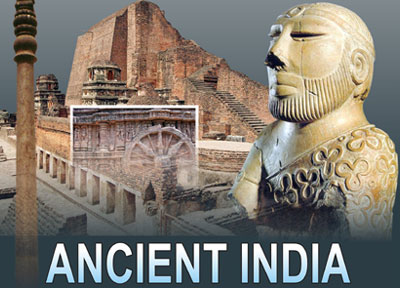



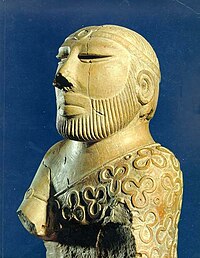
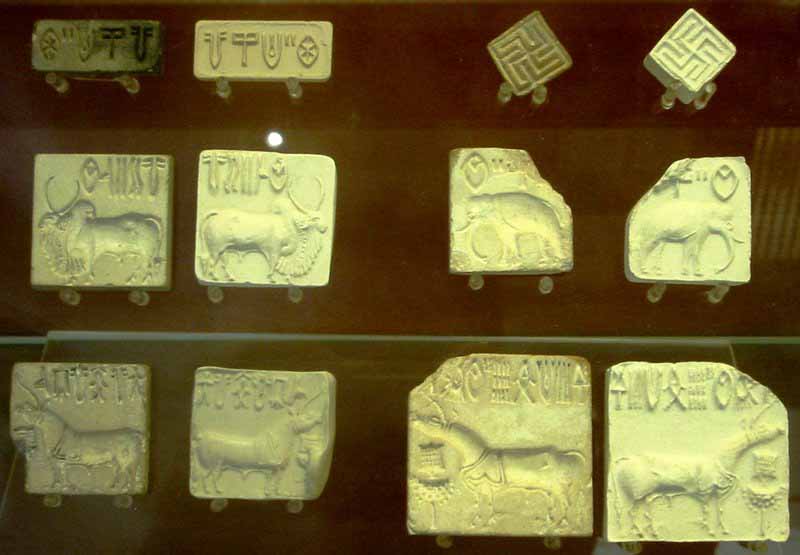






No comments:
Post a Comment